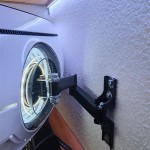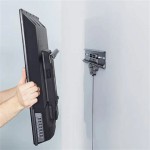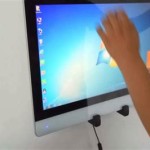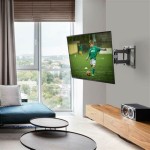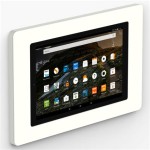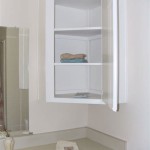Adjustable Computer Monitor Wall Mounts: Optimizing Ergonomics and Workspace Efficiency
Adjustable computer monitor wall mounts have emerged as a pivotal component in modern office and home environments, offering a blend of ergonomic benefits and space-saving capabilities. Unlike traditional monitor stands that occupy valuable desk surface, wall mounts affix the monitor to a vertical plane, freeing up horizontal space for other essential work tools and accessories. The adjustability feature is paramount, allowing users to customize viewing angles and monitor positions to suit individual preferences and physical needs, contributing to a more comfortable and productive work experience.
The functionality of an adjustable monitor wall mount extends beyond mere space optimization. It directly addresses potential health concerns associated with prolonged computer use, such as neck strain, back pain, and eye fatigue. By enabling users to position the monitor at an optimal viewing height and distance, these mounts promote better posture and reduce the physical stress on the body. This article will delve into the key aspects of adjustable computer monitor wall mounts, including their benefits, types, installation considerations, and factors to consider when selecting the appropriate mount for specific needs.
Benefits of Using Adjustable Monitor Wall Mounts
The advantages of using adjustable monitor wall mounts are multifaceted, spanning ergonomic improvements, enhanced workspace efficiency, and increased user comfort. These benefits are particularly relevant in today’s work landscape, where prolonged screen time is commonplace.
One of the primary benefits is improved ergonomics. Traditional monitor setups often force users to adopt suboptimal postures, leading to musculoskeletal discomfort. Adjustable wall mounts mitigate this issue by allowing users to customize the monitor's height, tilt, and swivel. The ability to elevate the monitor to eye level reduces neck strain, while adjusting the tilt minimizes glare and reflections, thereby reducing eye fatigue. Furthermore, the swivel function allows for easy monitor sharing during collaborative tasks, promoting a more interactive and efficient workflow.
Space saving is another significant advantage. In confined workspaces, desk space is a premium resource. By mounting the monitor on the wall, the desktop footprint is significantly reduced, creating more room for documents, peripherals, and other essential items. This is particularly beneficial in home offices or smaller workstations where maximizing space is crucial. A clutter-free workspace can also contribute to improved focus and productivity.
Increased flexibility is also a critical factor. Adjustable monitor wall mounts offer a range of motion that standard monitor stands cannot replicate. This flexibility allows users to adapt the monitor's position to various tasks and viewing preferences. For example, a user might prefer a higher monitor position when working on spreadsheets and a lower position when watching videos. The ability to quickly and easily adjust the monitor's position enhances comfort and reduces the need to constantly adjust one's posture to adapt to a fixed monitor position.
Finally, improved aesthetics should not be overlooked. Wall-mounted monitors create a cleaner and more modern aesthetic in the workspace. By eliminating the bulky base of a traditional monitor stand, the overall look of the desk is streamlined and less cluttered. This can contribute to a more professional and visually appealing environment, which can positively impact morale and productivity.
Types of Adjustable Monitor Wall Mounts
Adjustable monitor wall mounts are available in a variety of types, each offering different features and levels of adjustability. Understanding the different types is essential for selecting the mount that best suits individual needs and workspace requirements. These types can be broadly categorized based on their range of motion and specific functionalities.
Fixed wall mounts are the simplest type, offering minimal adjustability. Once installed, the monitor remains in a fixed position. While they are the most affordable option, they are not ideal for users who require flexibility in their monitor placement. Fixed mounts are best suited for situations where the monitor's position is less critical and the primary goal is to free up desk space.
Tilt-only wall mounts offer a limited range of vertical adjustment. Users can tilt the monitor up or down to improve the viewing angle and reduce glare. This type is more flexible than fixed mounts but still lacks the full range of motion needed for optimal ergonomics. Tilt-only mounts are suitable for users who primarily need to adjust the monitor's vertical angle but do not require horizontal adjustment or swivel capabilities.
Tilt and swivel wall mounts provide both vertical and horizontal adjustability. Users can tilt the monitor up or down and swivel it left or right. This increased range of motion allows for greater flexibility in positioning the monitor and sharing the screen with others. Tilt and swivel mounts are a popular choice for general office and home use, offering a good balance of adjustability and affordability.
Full-motion wall mounts offer the most comprehensive range of adjustment. These mounts typically feature a multi-jointed arm that allows users to extend, retract, tilt, swivel, and rotate the monitor. This level of flexibility enables users to achieve the optimal viewing angle in virtually any situation. Full-motion mounts are particularly beneficial for users who frequently change their posture or work collaboratively with others. They are also well-suited for situations where the monitor needs to be positioned at varying distances from the wall.
Height-adjustable wall mounts incorporate a mechanism for raising or lowering the monitor's vertical position without requiring manual adjustments to the wall mount itself. These mounts often use a gas spring or counterbalance system to provide smooth and effortless height adjustment. Height-adjustable mounts are ideal for users who frequently switch between sitting and standing desks or who share a workstation with others of varying heights.
Installation Considerations and Selection Factors
Proper installation is critical for ensuring the safe and effective use of an adjustable monitor wall mount. Incorrect installation can lead to monitor instability, damage to the wall, or even personal injury. Additionally, selecting the right mount involves considering various factors, including the monitor's weight and size, the wall type, and the desired range of motion.
Before beginning the installation process, it is essential to verify that the wall is capable of supporting the monitor's weight. Drywall alone is generally not strong enough to support a monitor, especially larger or heavier models. In most cases, it is necessary to attach the mount to a wall stud or use appropriate drywall anchors designed for heavy loads. A stud finder can be used to locate the studs behind the drywall.
The monitor's weight and size are crucial factors in selecting the appropriate mount. Each mount has a maximum weight capacity and a range of compatible screen sizes. Exceeding these limits can compromise the mount's stability and potentially damage the monitor. It is important to carefully review the mount's specifications and ensure that it is suitable for the intended monitor. The VESA (Video Electronics Standards Association) mounting standard is also relevant. VESA specifies the distance between the mounting holes on the back of the monitor. Ensure that the wall mount is compatible with the monitor's VESA pattern.
The type of wall is another critical consideration. Concrete walls, brick walls, and wood stud walls require different types of mounting hardware. Concrete and brick walls require specialized anchors, while wood stud walls can typically be mounted using screws. It is essential to use the appropriate hardware for the specific wall type to ensure a secure and stable installation.
The desired range of motion is another important factor to consider. As discussed earlier, different types of mounts offer varying degrees of adjustability. Users should select a mount that provides the range of motion needed to achieve the optimal viewing angle and ergonomic positioning. Factors such as the user's height, the distance from the monitor, and the intended use of the monitor should all be considered when determining the required range of motion.
Cable management is also important. Wall mounts often include features for routing cables neatly behind the monitor and along the mounting arm. This helps to keep the workspace organized and prevents cables from becoming tangled or damaged. Consider a mount with integrated cable management features to maintain a clean and professional appearance.
Finally, consider the build quality and materials of the wall mount. A well-constructed mount made from durable materials will provide greater stability and longevity. Look for mounts made from steel or aluminum, and check for reviews from other users to assess the mount's overall quality and reliability.

Mount It Height Adjustable Single Monitor Wall Adapter Screens Up To 32 In Mi 3753b The Home

Mount It Monitor Wall Fits 17 Inch 32 Monitors Height Adjustable Vesa Bracket

Dual Computer Monitor Wall Mount

Dual Monitor Wall Mount With 20 Inch Extension Height Adjustable

Mount It Height Adjustable Single Monitor Wall Adapter Screens Up To 32 In Mi 3753b The Home

Computer Monitor Wall Mount Track

Startech Com Wall Mounted Sit Stand Desk Single Monitor

Siig Aluminum Wall Mount Gas Spring Monitor Arm

Mount Pro Single Monitor Wall For 13 To 32 Inch Computer Screens Gas Spring Arm Holds Up 17 6lbs Full Motion Adjustable Vesa 75x75 100x100 White Newegg Com

Wall Mount Workstation Articulating Standing Desk W Ergonomic Height Adjustable Monitor Arm Padded Keyboard Tray 34 Vesa Display Foldable


